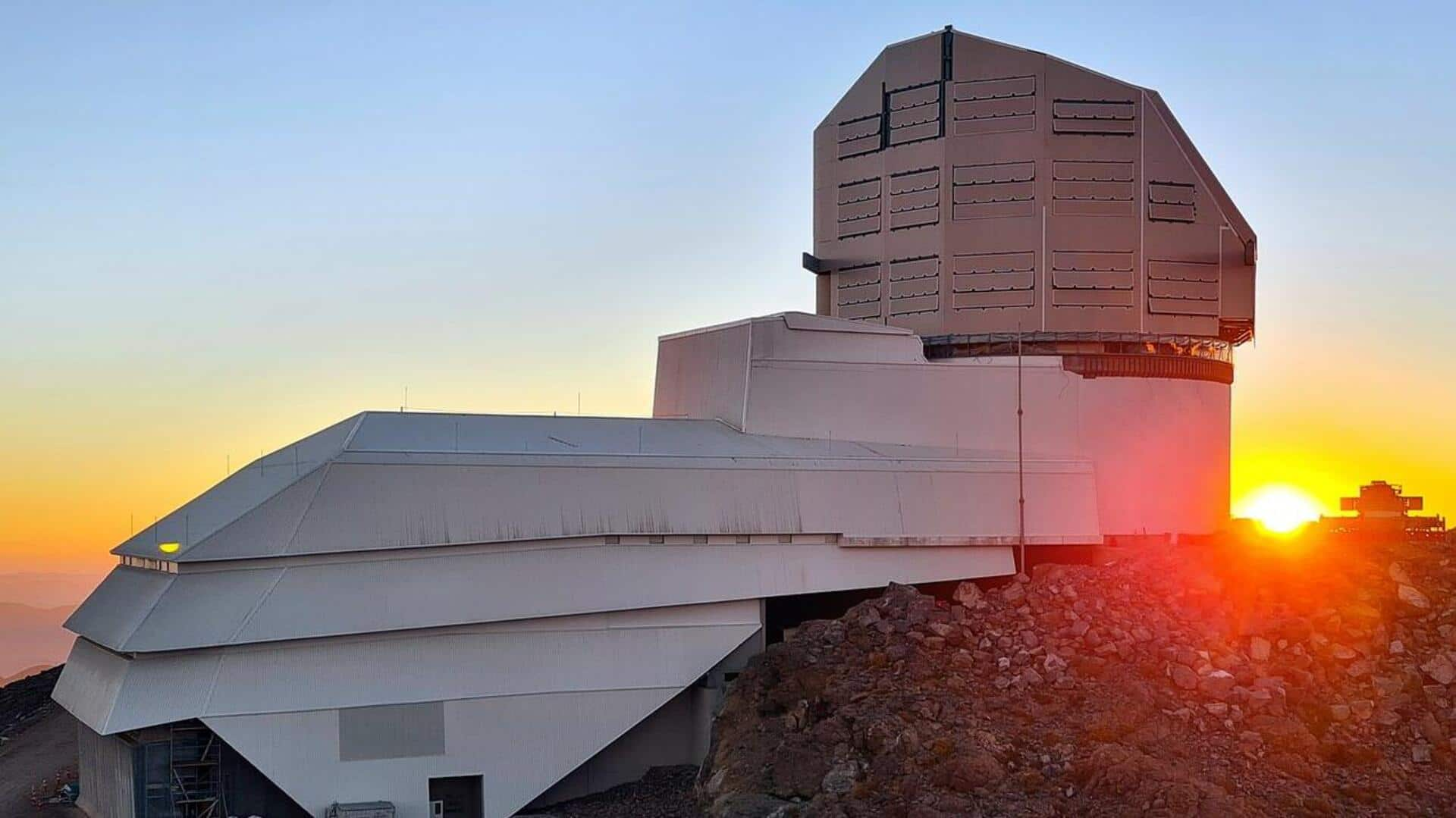
World's largest camera, with 3,200MP resolution, ready for astronomical exploration
What's the story
The Vera C. Rubin Observatory on Cerro Pachon in northern Chile is poised to transform astronomy with its world's largest digital camera.
The observatory's main task will be to take detailed images of the entire night sky.
The revolutionary camera features a resolution of 3,200MP and every image it takes will cover a patch of sky as big as 40 full moons.
Sky exploration
Rubin Observatory's ambitious sky survey
Rubin Observatory plans to survey the entire visible sky every three nights, producing thousands of images.
These images will enable astronomers to spot any celestial object that moves or changes brightness.
The observatory is likely to find some 17 billion stars and 20 billion galaxies never seen by humankind.
"We're exploring the sky in a way that we haven't before, giving us the ability to answer questions we haven't even thought to ask," said Clare Higgs, observatory's astronomy outreach specialist.
Long-term project
A decade-long journey of astronomical discovery
The Rubin Observatory's sky survey will continue for a decade, with the telescope taking 1,000 images every night.
Higgs hopes this massive project will open up new scientific fields and discoveries.
"In 10 years, we're going to be talking about new fields of science, new classes of objects, new types of discoveries that I can't even tell you about now because I don't know what they are yet," she said.
Legacy
Rubin Observatory: A tribute to a pioneering astronomer
The Rubin Observatory, which has been under construction since 2015, is named after Vera Rubin, the American astronomer who confirmed dark matter's existence.
The project was initially funded by private donations from billionaires Charles Simonyi and Bill Gates in early 2000s. It later received joint funding from the Department of Energy's Office of Science and the US National Science Foundation.
The observatory is now managed in partnership with SLAC National Accelerator Laboratory—a research center operated by Stanford University in California.
Strategic location
Why is the Rubin Observatory located in Chile?
The Rubin Observatory is located in the Chilean Andes, which is famous for its amazing night sky quality.
"For optical telescopes, you need a site that is high, dark and dry," Higgs explained.
The observatory is located alongside other telescopes in the region, where minimal light pollution and air moisture make the instruments more sensitive.
Although remote, data transmission from the mountain isn't a problem, thanks to existing infrastructure that Rubin can use.
Data management
Main mission and data handling
The Rubin Observatory's primary mission, dubbed LSST (Legacy Survey of Space and Time), is to make a decade-long movie of the southern sky.
The camera can take an image every 30 seconds, producing 20TB of data every day. This data is then sent from Chile to California in just 60 seconds for AI and algorithms to analyze.
"We're anticipating about 10 million alerts per night coming off the telescope," Higgs said.
Research prospects
Rubin Observatory's potential impact on scientific research
The Rubin Observatory data will be released annually to a select group of astronomers and made public after two more years.
It will contribute to four main areas of research: cataloging the solar system, mapping our galaxy, studying "transients" that change position or brightness over time, and understanding dark matter.
Higgs believes Rubin will significantly advance these fields. "There are probably 10 different fields of science where I can tell you that Rubin is going to do great," she said.